This month I am going to show you a variation of one of the most popular old school lures ever made. The marabou jig is an extremely popular and productive lure that has been used to target a host of species for more than half a century. The marabou Deceiver jig is a variation of this classic and combines the traditional marabou jig and Lefty’s Deceiver fly pattern. Both of these have been extremely popular on a host of fresh and saltwater species over the years and will still work extremely well in the modern era.
This year marks the 60th anniversary of the first commercially tied marabou jigs. These were created in Amsterdam, Missouri in 1957 by Bill Ward of the Bass Buster Lure Company. This jig was firstly made to imitate the marabou streamer flies that trout anglers used on the White River. When fished in these waters by Bill’s father Virgil, the marabou Deceiver accounted for scores of trophy trout. They were then subsequently produced in sizes ranging from 1/64oz to 1/2oz, in colours such as black, white, purple, yellow, red/white, blue/grey, pink and orange.
Since then, anglers have made marabou jigs in a broad array of sizes and colours and the species list of captures is extensive in both fresh and saltwater environs. I think I used my first marabou jig in my early teens (around 1983). It was a small white one with a red ball head tied on a #2 hook and about a 1/4oz in weight. The first capture was a tarpon in a FNQ lagoon, but it accounted for many more species until there was virtually no feather left intact. I recall catching sooty grunter, spangled perch, jungle perch, trevally, giant herring, barramundi, grunter, steelback salmon, blue salmon and several other species on it in the early days. Marabou jigs are also extremely productive on a broad array of reef species and will tempt almost anything swimming.
The amount of action imparted by the marabou is amazing and even when sitting stationary in still water, the marabou will waft and pulse enticingly. The slightest twitch of the rod tip will produce a pronounced kick to the marabou. When at rest, the marabou will flare and waft, yet when retrieved it condenses back against the body. A stop and start retrieve will have the jig looking like it is actually breathing. Marabou jigs can be cast out and worked back with a hopping action, using a stop and start retrieve or worked vertically in a jigging action. The addition of the Deceiver tail and flash adds to the profile, action and appeal of the original marabou Deceiver jig.
To make the marabou deceiver jig you will need saddle hackles, marabou, flash material (krystal flash UV grey ghost used here), a jighead, flat-waxed nylon thread, vinyl cement (or other thin, fast drying glue), scissors and a fly tying bobbin (not essential but will make the task a lot easier).
Reads: 5435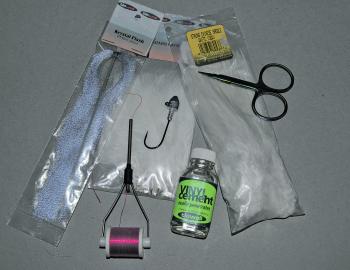
Materials
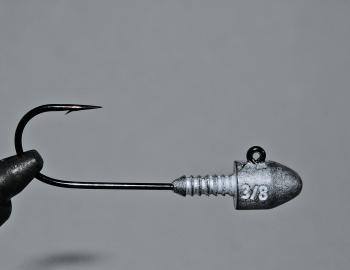
What jighead you use is up to you however a quality hook is essential for making a strong marabou jig. What weight you choose will depend on your fishing requirements. To hold your jighead whilst you are tying, you can use a fly tying vice if you have one
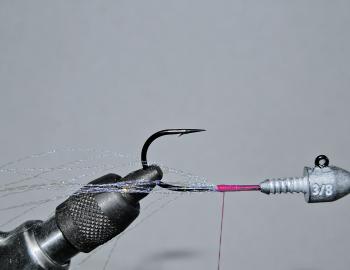
Attach your thread roughly half way along the hook shank using a jamb knot or similar. Cut around 6 to 10 strands of flash and attach at this point using a series of thread wraps. You can use a broad array of flash materials including krystal flash, shimm
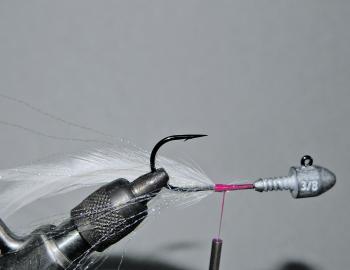
At this same position, attach 3 to 5 saddle hackles to the far side of the jig with a series of thread wraps. The natural curvature of the hackle should be facing inwards. The middle of the hackle should roughly coincide with the bend of the hook.
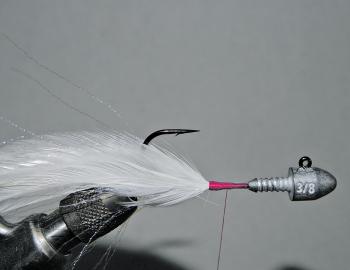
Repeat this step on the side of the hook closest to you. Again the hackle curvature should face inwards towards the other hackle. The same number of hackles should be on both sides and they should be the same length as shown.
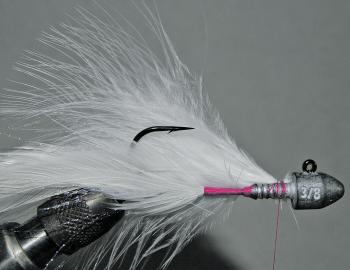
Cut the marabou so that it is long enough to extend a centimetre or two past the bend of the hook. You will probably want one or two marabou quills tied in on the far side of your hook with a series of thread wraps. A little vinyl cement on the thread wil
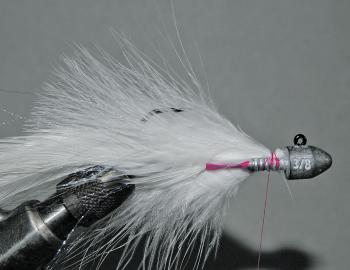
Next, do the same on top of the hook shank to secure a similar amount of marabou quills.
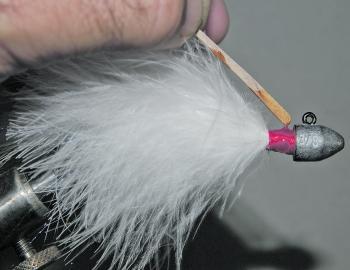
Continue to add similar amounts of marabou to the underside of the hook and the side closest to you until you have an even covering around the hook shank. Do repeated wraps of thread to secure and build up the area between the marabou and the jighead. Fin
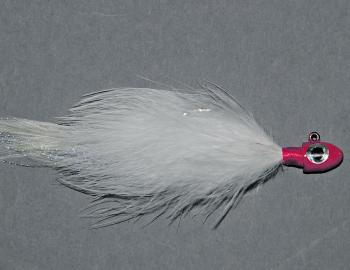
You can leave the head plain or paint it with enamel paint. You can even add some eyes if you wish. What colour and size you make your marabou deceiver jig is up to you. It will probably depend on your target species and water depth being fished. As marab




